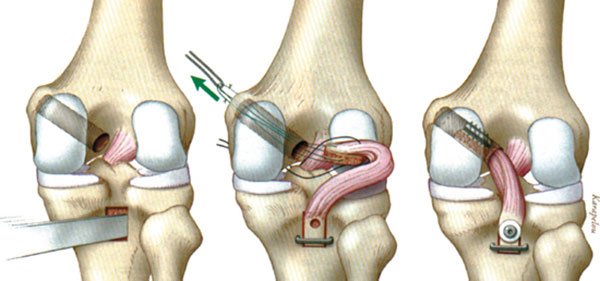What is Posterior Cruciate Ligament (PCL)?
The posterior cruciate ligament (PCL) is a ligament within the knee. Ligaments are tough bands of tissue that connect bones.
The PCL - similar to the anterior cruciate ligament (ACL) - connects the thigh bone (femur) to your shin bone (tibia), which prevents tibia to translate posteriorly. Although it is larger and stronger than the ACL, the PCL can be torn.

Torn PCL (Before)

PCL Reconstruction (After)
Symptoms of PCL injury
Most people don't feel or hear a "popping" sensation in the knee after a PCL injury. This is more common with an injury to the ACL.
After a PCL injury, people often think they only have a minor knee problem. They may try to go on with their usual activities. However, symptoms that can develop include:
- Swelling (mild to severe)
- Knee pain
- Wobbly sensation in the knee
- Trouble walking or bearing weight on the knee
Over time, a PCL tear can lead to osteoarthritis in the knee.
What is PCL Reconstruction?
Most PCL reconstruction is performed using knee arthroscopy. In this minimally invasive procedure, the surgeon makes small incisions around the knee joint and inserts a narrow fiber optic scope (called an arthroscope) to examine the condition of the knee. Tiny instruments are used to remove the damaged ligament and replace it with a graft. Tunnels are drilled into your femur (thighbone) and tibia (shinbone) to accurately position the graft, which is then anchored with screws or other fixation devices.


